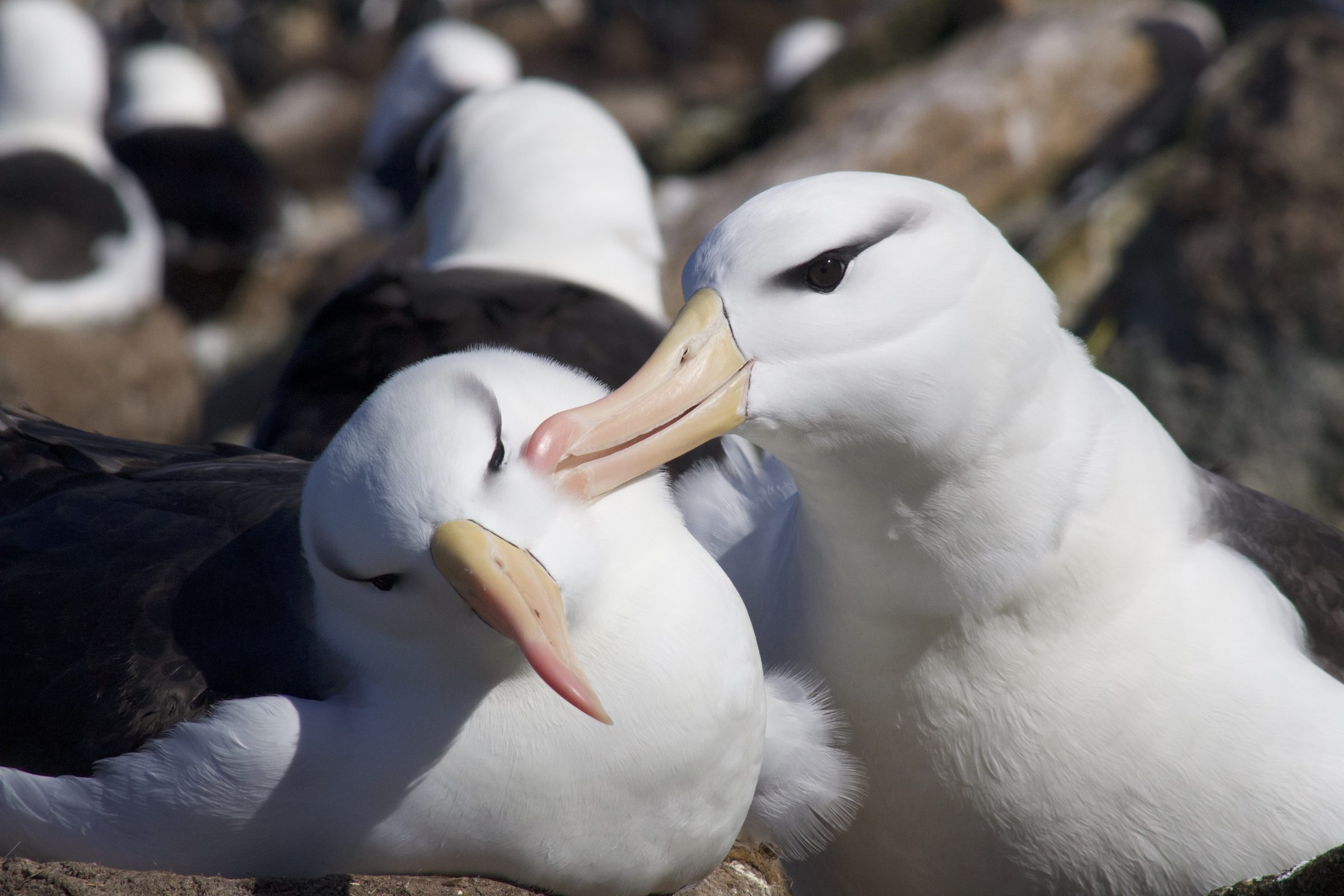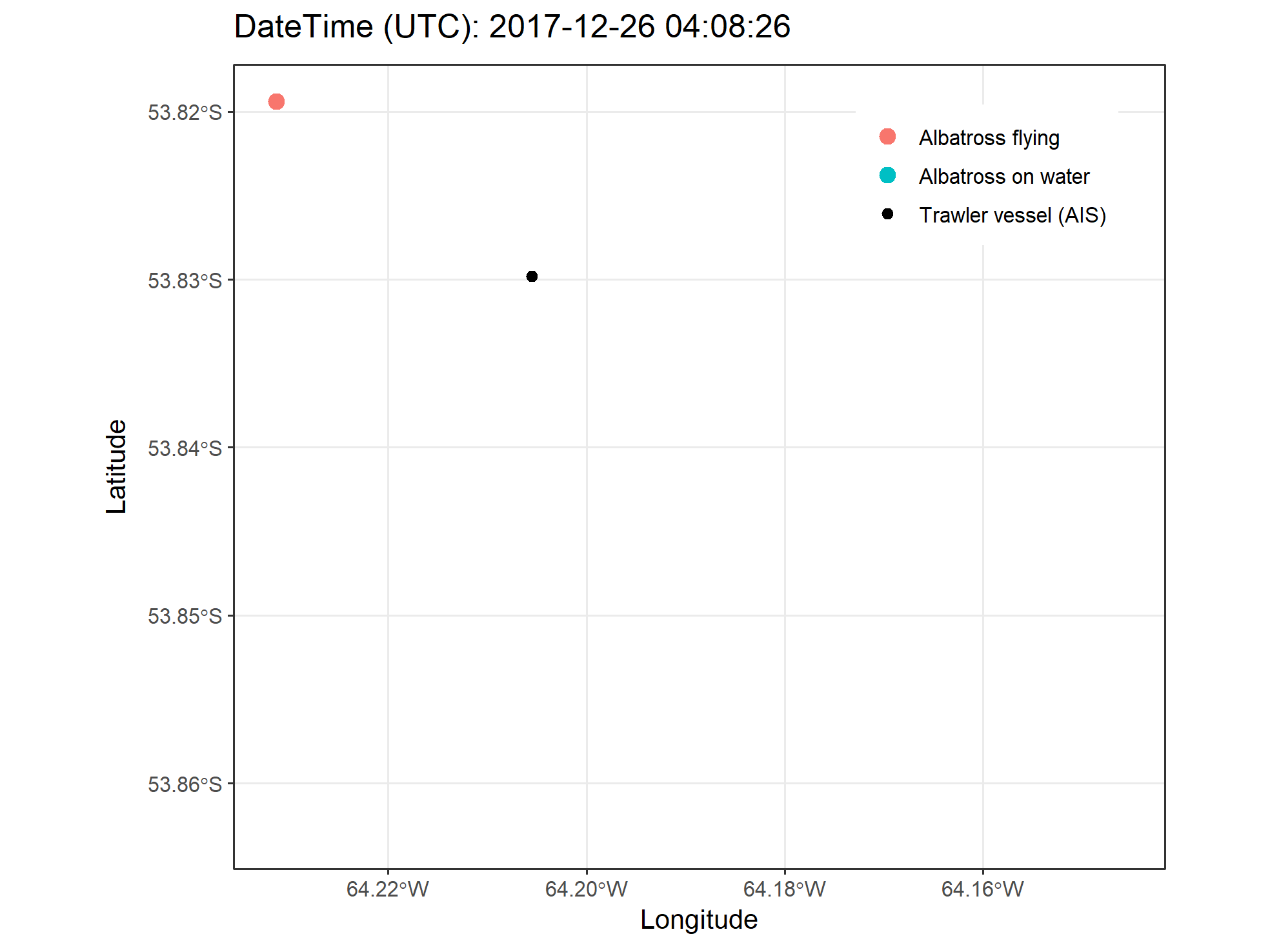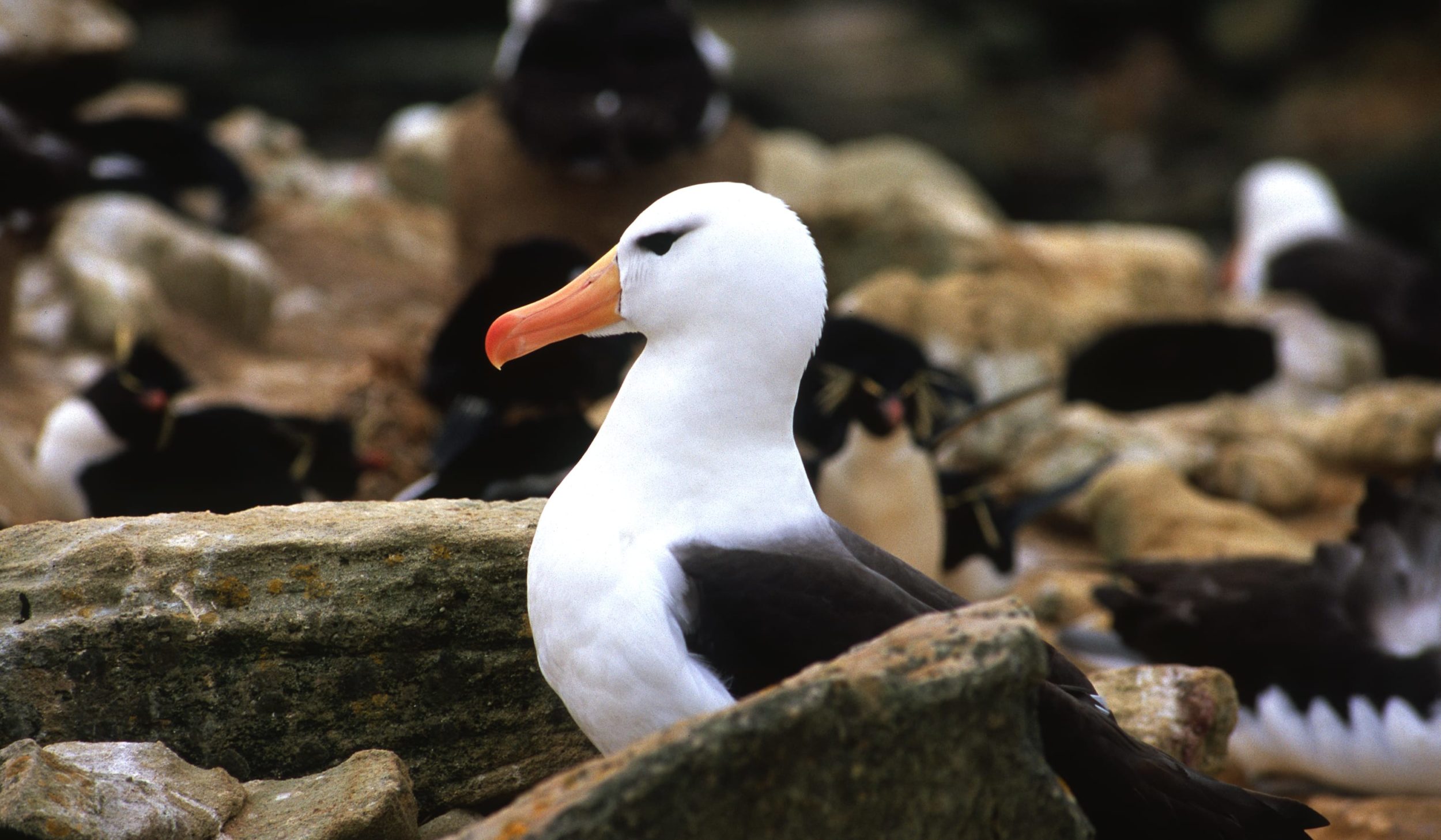In oceans around the world, seabirds follow fishing vessels looking for easy meal. This puts them at risk of bycatch, when birds are killed after getting caught or colliding with fishing gear. In this study we have revealed that there are certain albatross behaviours that are almost exclusively seen when they are following a vessel – a finding that could help manage bycatch risk for ‘hidden’ fisheries.
Tracking devices like GPS are a fundamental tool when identifying bycatch risk, allowing us to see where birds forage and if this aligns with areas of known fishing vessel activity. But there is a big catch – many fishing vessels are hidden. Small-scale and artisanal fishing vessels, which make up most vessels worldwide, are often not required to broadcast their locations. Meanwhile, some fisheries – especially illegal fisheries – deliberately turn off their tracking systems. Tracking the birds themselves is not always easy either, particularly for young or non-breeding birds that spend long periods at sea.
 Black-browed Albatross allopreening by Tim Guildford
Black-browed Albatross allopreening by Tim Guildford
To try and find a solution to this challenge, we tracked the foraging trips of 45 Black-browed Albatrosses in the Falkland Islands. We tagged the birds with two devices: a large back-mounted GPS, for high-resolution movement data (a location every 5 or 10 seconds); and a small leg-mounted immersion logger. When a bird was sitting in the water, this logged as wet, and when a bird was flying, it logged as dry. We used the GPS data to find occasions where birds were actively following known fishing vessels. After looking closer at the wet/dry data, we noticed something striking. The bird’s movements were in perfect sync with the vessel and would not occur without a vessel being present. This discovery inspired our entire analysis. Small-scale and illegal fishing vessels represent a massive blind spot in seabird bycatch risk assessment. Here we’ve unlocked a new way of seeing the unseen.
 Distinct Black-browed Albatross movements when following a trawler vessel
Distinct Black-browed Albatross movements when following a trawler vessel
We showed that as birds follow vessels, they constantly alternate between landing and taking off – and they do so in a very regular way: for example, multiple repetitions of 80 seconds of sitting (wet) followed by 40 seconds of flying (dry). This behaviour is unlike any natural foraging behaviour previously seen – i.e. it might show vessel following, even if we could not see the vessel. Using wet/dry data alone, we could detect over 80% of albatrosses’ vessel following time. Importantly, we rarely detected vessel following when it was not happening.
Currently, the behaviour has only been confirmed in Black-browed Albatrosses following trawler vessels discarding fishing waste. We do not yet know whether this distinct behavioural pattern is also seen in other seabird species following other types of fishing vessel, such as longliners. A clear next step for us is to test the method for other species; we are currently looking at the Balearic shearwater, a smaller species that frequently follows artisanal fishing vessels along the Mediterranean coast of Spain.
 Black-browed Albatross by Eric J. Woehler
Black-browed Albatross by Eric J. Woehler
These findings can be used to prioritise conservation efforts in fisheries around the world, including the use of mitigation measures such as bird-scaring lines and managing fisheries discards. It can also help identify which areas are most in need of more monitoring and enforcement of existing regulations.